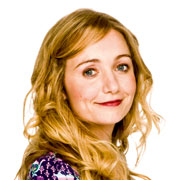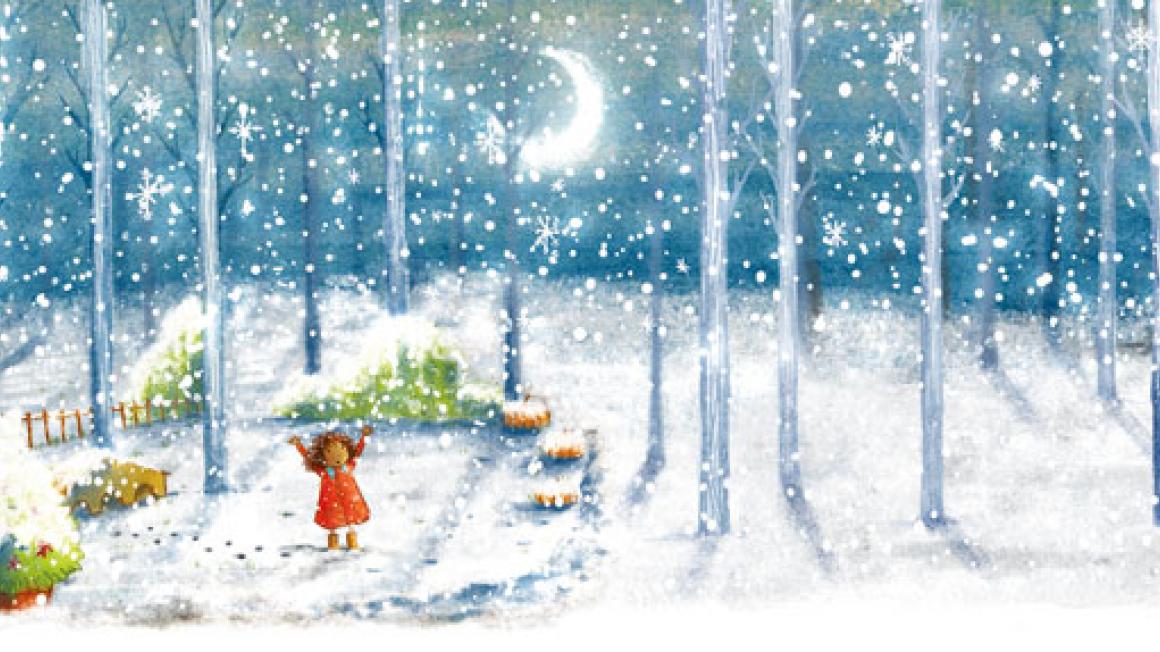Why I wrote my OWN Winter's Tale

The first time I awoke to such a bewitching world, I was a young girl, snuggled up in a bed with my cousins, shivering and peering at the strange light that crept beneath the curtains, oddly bright and pale all at once.
The air we breathed was freezing and came out of our mouths and noses in billows of silvery smoke. Eventually, my eldest cousin slipped, trembling, out of bed and lifted up the curtains. My mouth fell open in wonder: everything had vanished beneath a blanket of white, the ground now a mirror of the clouds. And the quietness that seemed to have fallen with it was like a great softness at the edge of the world.
As I gazed at our Arctic garden, I couldn’t help but harbour the dream that this vast whiteness was somehow connected to Father Christmas. And that if snow could appear silently and magically in the dead of night, then so could a reindeer-drawn sleigh.
At least that was my seven-year-old reasoning – that the mythical man from the north really was coming down the chimney and half-eating all those mince pies. Of course, now, as a children’s television presenter and a mum to a little (read ‘wilful’) girl, I finally know the truth: no one ever eats half a mince pie.
But that doesn’t mean we shouldn’t keep the magic alive. The question is how we do this without being drawn into the overtly commercial side of Christmas. After all, as a parent or grandparent, it’s impossible to ignore the compulsion to make each occasion wonderful. Or hush the nagging fear that, if your child doesn’t have a fairytale day, somehow you’ve failed.
And yet when I think back to a time when the possibility of Santa seemed as real as the twinkling lights on the tree, it isn’t the particulars of the presents that I remember, but the tradition and excitement that surrounded them. It’s tramping through the frost to midnight mass, the one time of year we went to church. It’s gazing at flickering candles and singing carols from the petal-thin pages of hymn books. And it’s how, on the way home, we’d steal glances at the stars, our eyes always searching for the shape of a shimmering sleigh.

It’s the profound effect the film of The Snowman had on me, a wordless animation full of childhood wonder. Even now if my ear should pick out a few notes of Howard Blake’s score, I am moved close to tears by the image of that puddle of melted snow and the lone little boy in a scarf.
It’s the disappointment of the cake we spent hours decorating and then completely forgot to take with us to the Christmas celebrations – and it’s how, instead of eating the real thing, we simply closed our eyes and imagined it in front of us instead.
For these memories are far more precious to me than the majority of the gifts I have received over the years. Of course, presents are important, and there is a joy in the giving and opening of them, but enormous expense and big debts shouldn’t need to be incurred. My Christmases were made by the people who surrounded me, spent time with me and loved me: the people who united to make the magic real.
It’s the same magic that’s been passed down through generations in our favourite Christmas stories. That rare moment when every grown-up remembers what it was to believe and steps forward to speak the same words, bringing to life the tale of the nativity, or Father Christmas himself. They are two very different narratives, but both are ingrained in our cultural history and inspire our belief in miracles, however temporary.
And out of them has grown a whole host of tales that have become British Christmas classics: The Nutcracker ballet, spellbinding with its Christmas-tree setting and Tchaikovsky score; Charles Dickens’s A Christmas Carol, which terrifies me, but has inspired me too, with its message that riches are meaningless without friendship and love, and that it’s never too late to change.
Clement Clarke Moore’s lyrical and lovely ’Twas The Night Before Christmas is great for reading out loud and captivates listeners of all ages. More recently, Jeanette Winterson’s The Lion, The Unicorn And Me, a charming retelling of the journey to Jerusalem seen through the eyes of the donkey, has charmed me.
And so this year I have written a snowy children’s story of my own. Snowflakes, which is illustrated by Laura Ellen Anderson, tells the story of Mia, a little girl who leaves the city to live with her grandmother in a snowy forest – and learns that she, like every snowflake, is perfect in her own unique way. I can only hope that it adds a little magic to someone’s Christmas.
This Christmas Eve, once I’ve laid out a (half-eaten) mince pie, I’ll pour myself a glass of Baileys, listen to the Pogues – you can’t beat Fairytale Of New York for a Christmas classic – and wait for the moment when the magic becomes real and I can creep upstairs to fill my little one’s stocking.
And when the clock chimes midnight, I’ll settle down to sleep – and dream of snow, which can transform the world with a magic more memorable than all of the gifts on Earth.
Snowflakes by Cerrie Burnell is published by Scholastic, priced £6.99.


